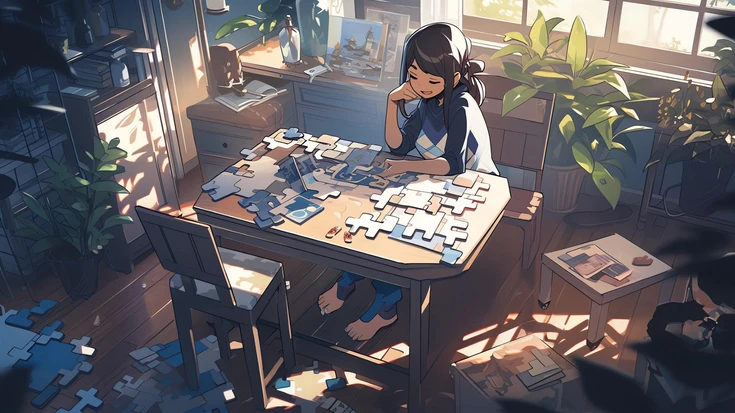
The Jigsaw Technique: How to Learn Faster
10.01.2023

Before you lies a spread of hundreds of tiny, jigsaw pieces. Each unique, yet part of a whole. You pick one up to examine the edges, contemplating where it might fit. You're filled with uncertainty, but also hope for a picture waiting to unfold.
When learning something new, either reading a new chapter for class or doing research for a project, I like to think about it like putting together a puzzle. I used to make the mistake of reading my text as if reading a novel- from start to finish. Without surveying what I was about to read, I often got lost in the details without being able to see the bigger picture. The better approach is to preview the content and form a mental model before diving in.
Step 1: Context (Looking at the Box): The first thing we do when putting together a puzzle is to look at the box it came in. We want to know what the puzzle will look like as a finished product. In learning, this is known as acquiring context. For me, using wikipedia, google, ChatGPT, or a quick summary video does the trick. I want to know the importance and relevance of what I'm about to learn.
Step 2: Skimming (Laying out the Pieces): Next, we lay out all the pieces on the table to get an overview. This is like quickly skimming the material we're about to learn, and looking at the main headers and diagrams. No one solves a puzzle by taking one piece at a time out of the box. But that's essentially what you're doing when you dive straight into reading without skimming.
Step 3: Chunking (Grouping the Pieces): Before starting the puzzle, we sort the pieces into groups. We put blue pieces in a pile because it probably forms the sky. We put edge pieces in a pile because it forms the border of the puzzle. We effectively reduce 500 individual pieces into just a few piles of similar pieces. In the same way, we chunk together related ideas that we're learning. Concepts with their supporting details. Causes and effect. Parts of a whole. This reduces the our cognitive load and makes learning more manageable.
So the next time you're tasked with learning a big new subject, treat it like putting together a puzzle.
Join our newsletter to level up your learning and earning potential